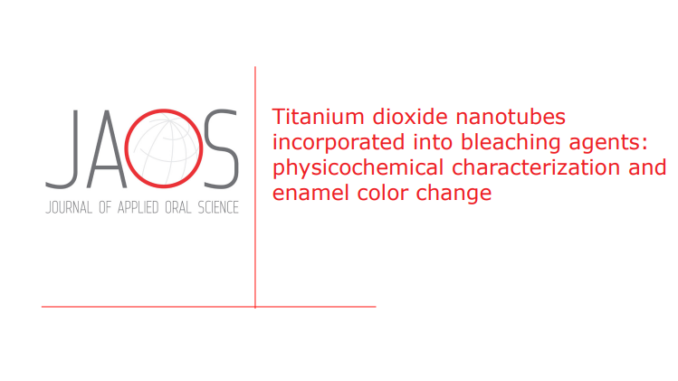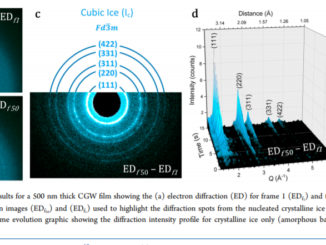
Titanium dioxide nanotubes incorporated into bleaching agents: physicochemical characterization and enamel color change
Abstract: Titanium dioxide nanotubes are nanostructures that can accelerate the oxidation reaction of bleaching procedures and promote a more effective whitening effect.
Objective: This study evaluated physicochemical properties of bleaching agents incorporated with titanium dioxide (TiO2) nanotubes, and the effects on tooth color change at different periods.
Methodology: 40 premolars were treated according to the following groups (n=10): CP – 10% carbamide peroxide (1 hour daily/21 days); CPN – CP incorporated into TiO2; HP – 40% hydrogen peroxide (three 40-minute sessions/7 days apart); HPN – HP incorporated into TiO2. Color shade was evaluated at five different periods (baseline, after 7, 14 and 21 days of bleaching, and 7 days after end of treatment) according to Vita Classical, CIELab and CIEDE2000 scales. Mean particle size (P), polydispersity (PO) and zeta potential (ZP) were evaluated using dynamic light scattering. Data on the different variables were analyzed by mixed model tests for measures repeated in time (ZP e L), generalized linear models for measures repeated in time (P, PO, Vita Classical and b), and Friedman and Mann-Whitney tests (a* and color change/ΔE and ΔE00).
Results: CP and CPN presented higher P, higher PO and lower ZP than HP and HPN (p≤0.05). All groups showed a significant decrease in Vita Classical color scores after 7 days of bleaching (p<0.05), and HPN presented a greater significant reduction than the other groups. L* increased in TiO2 presence, in all groups, without any differences (p>0.05) in bleaching time. A significant reduction occurred in the a* and b* values for all the groups, and HPN presented lower a* and b* values (p<0.05) than CPN. ΔE was clinically noticeable after 7 days, in all groups, and all groups resulted in a perceptible color change according to ΔE00.
Conclusion: TiO2 did not influence physicochemical properties of the bleaching agents. HPN presented more effective tooth bleaching than CPN.
Author(s): Monteiro, N. R.; Basting, R. T.; do Amaral, F. L. B.; Franca, F. M. G.; Turssi, C. P.; Gomes, O. P.; Lisboa, P. N.; Kantovitz, K. R.; Basting, R. T.
Journal of Applied Oral Science
Published: June 24, 2020 Volume:28




